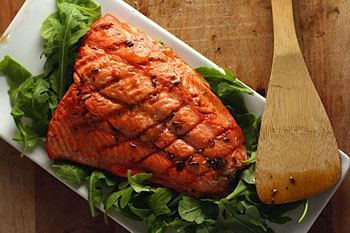Fresh Fruit Now Top Snack
Monday, 04 March 2013 00:20
 More popular than chocolate and potato chips, snacking occasions bearing fruit are growing.
More popular than chocolate and potato chips, snacking occasions bearing fruit are growing.
Fresh fruit is not only the top snack food consumed in America, it is also one of the fastest growing, according to new snacking research from Port Washington, N.Y.-based The NPD Group, a global information company. NPD’s recently released “Snacking in America” report finds that growing concerns about health and eating right are contributors to the increasing popularity of fruit as a snack.

 It and 10 others join The Food Channel’s 2013 Trends Forecast. Smoked water, anyone? And “no choice” is becoming the new choice when dining out.
It and 10 others join The Food Channel’s 2013 Trends Forecast. Smoked water, anyone? And “no choice” is becoming the new choice when dining out. Cascade Culinary Institute builds a new culinary center whose physical and spatial attributes meld perfectly with its natural surroundings, facilitating student learning and the successful collaboration of education and community.
Cascade Culinary Institute builds a new culinary center whose physical and spatial attributes meld perfectly with its natural surroundings, facilitating student learning and the successful collaboration of education and community. Using Kickstarter for funding, RADISH rolls out as a reality for a group of Providence students of various disciplines. And delicious, wholesome food served from an artists’ hub on wheels becomes the order of the day.
Using Kickstarter for funding, RADISH rolls out as a reality for a group of Providence students of various disciplines. And delicious, wholesome food served from an artists’ hub on wheels becomes the order of the day. Jack Uldrich to launch Mercer Cutlery’s Speaker Series at inaugural CAFÉ event in Chicago, Feb. 22-24, 2013.
Jack Uldrich to launch Mercer Cutlery’s Speaker Series at inaugural CAFÉ event in Chicago, Feb. 22-24, 2013.